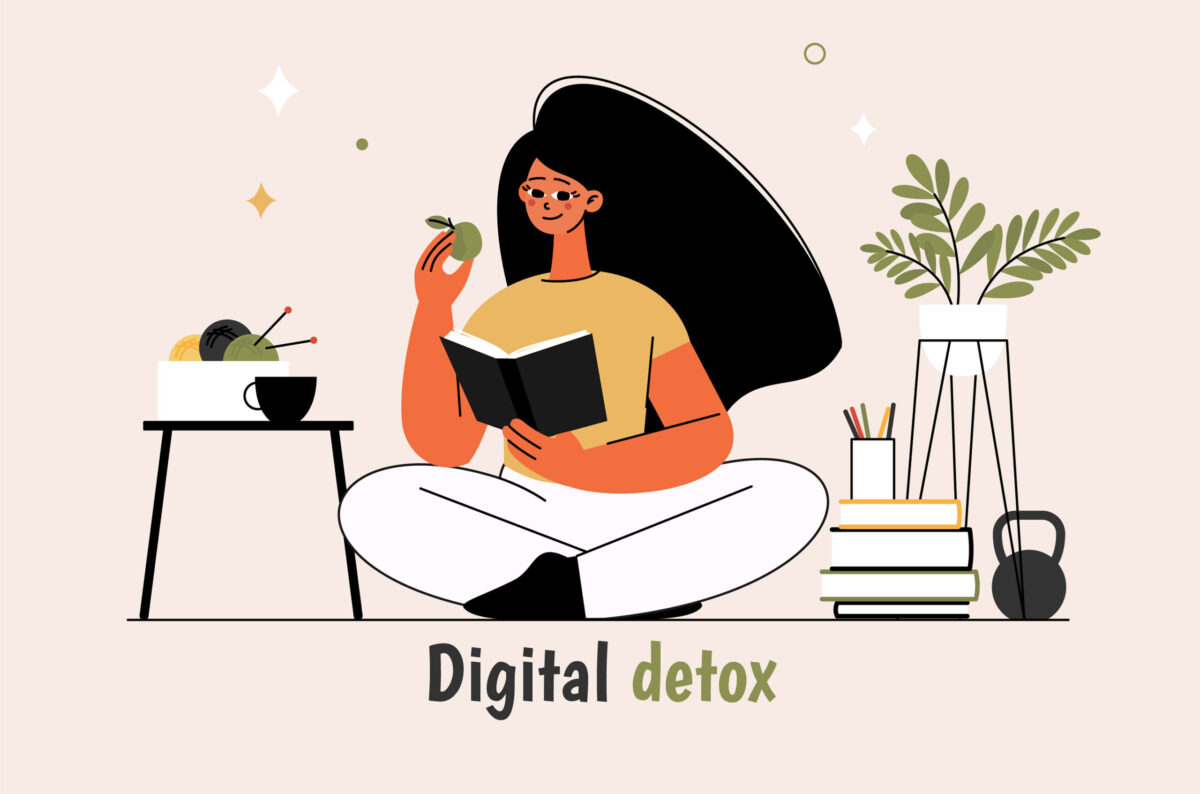In today’s digital world, it’s easy to feel like we’re constantly plugged into our devices, our emails, and our social media feeds. But this constant connectivity can take a toll on our mental health, our relationships, and our overall well-being. That’s why it’s important to take some time for a digital detox every now and then.
Image source : freepik
Table of Contents
What is a digital detox?
A digital detox is a period of time when you consciously disconnect from your digital devices and immerse yourself in the real world. It’s about taking a break from the constant stream of information and stimulation that we’re bombarded with on a daily basis.
Why is it important to unplug?
There are many benefits to unplugging from your digital devices, including:
- Reduced stress: Constant connectivity can lead to increased stress levels and anxiety. Taking a break from your devices can help to reduce these negative emotions.
- Improved sleep: The blue light emitted from our devices can interfere with our sleep. Unplugging in the evening can help improve sleep quality.
- Increased productivity: When we’re constantly checking our devices, we’re constantly interrupting our workflow. Unplugging can help us to be more focused and productive.
- More meaningful connections: Spending less time on our devices can give us more time to connect with the people and things that matter most to us.
Six Tips for unplugging from your digital devices to Lead a Healthier Life
1. Set boundaries:
The first step to unplugging is to set boundaries for yourself. Decide when you’re going to be plugged in and when you’re going to be unplugged. For example, you might decide to unplug from work emails after 5pm or to unplug from social media on weekends.
2. Create a digital vacation:
Image source : freepik
Schedule regular digital vacations for yourself. This could be a weekend getaway where you leave your phone at home, or it could simply be a few hours each week where you turn off your notifications and put your phone away.
3. Find a replacement activity:
When you unplug, it’s important to have something else to fill your time. Find an activity that you enjoy and that doesn’t involve screens. This could be reading, going for a walk, spending time with friends and family, or pursuing a hobby.
Image source : freepik
4. Make it a habit:
Unplugging doesn’t have to be an all-or-nothing thing. Start by taking small breaks from your devices throughout the day. Gradually increase the amount of time you spend unplugged until it becomes a habit.
5. Be patient:
The habit of always being connected is something that takes effort to get rid of. Be kind to yourself and try not to give up if you make mistakes occasionally.
Image source : freepik
6. Seek support:
If you’re struggling to unplug on your own, talk to a friend, family member, or therapist. They can offer support and encouragement as you work to make a change.
In this day and age where everything is digital it is easier said than done to unplug from your devices even from time to time . Nevertheless, all good things take time. Start by doing simple things like turning off the notifications, deleting social media apps and creating a technology-free zone. Let’s look up from our digital devices and see the incredible world around us at least once in a while.



